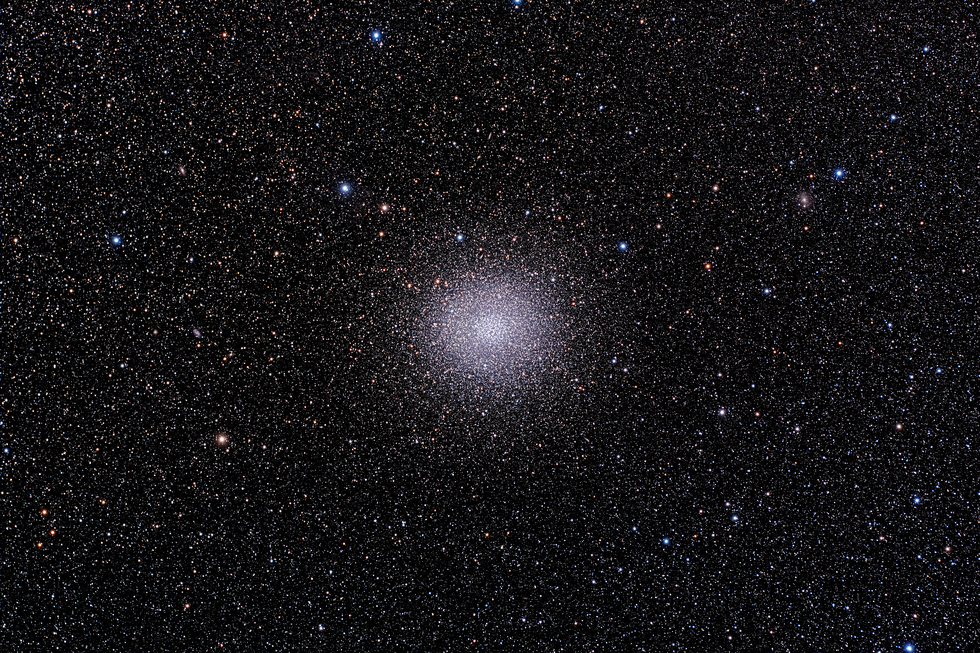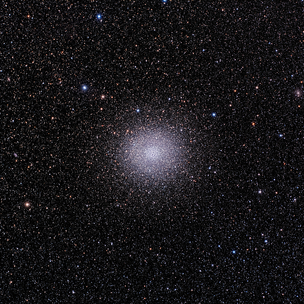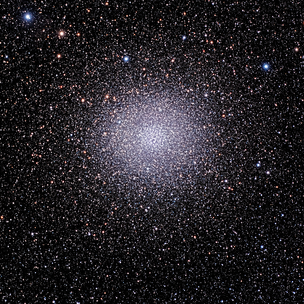Omega Centauri / NGC-5139
1
8
Omega Centauri / NGC-5139
Omega Centauri (NGC-5139). Total exposure time 5h 10min, AUS-2 (CMOS).
Cropped version also attached.
----
Omega Centauri (ω Cen, NGC 5139, or Caldwell 80) is a globular cluster in the constellation of Centaurus that was first identified as a non-stellar object by Edmond Halley in 1677. Located at a distance of 17,090 light-years (5,240 parsecs), it is the largest-known globular cluster in the Milky Way at a diameter of roughly 150 light-years. It is estimated to contain approximately 10 million stars, and a total mass equivalent to 4 million solar masses, making it the most massive-known globular cluster in the Milky Way.
Omega Centauri is very different from most other galactic globular clusters to the extent that it is thought to have originated as the core remnant of a disrupted dwarf galaxy. (Wiki)
Cropped version also attached.
----
Omega Centauri (ω Cen, NGC 5139, or Caldwell 80) is a globular cluster in the constellation of Centaurus that was first identified as a non-stellar object by Edmond Halley in 1677. Located at a distance of 17,090 light-years (5,240 parsecs), it is the largest-known globular cluster in the Milky Way at a diameter of roughly 150 light-years. It is estimated to contain approximately 10 million stars, and a total mass equivalent to 4 million solar masses, making it the most massive-known globular cluster in the Milky Way.
Omega Centauri is very different from most other galactic globular clusters to the extent that it is thought to have originated as the core remnant of a disrupted dwarf galaxy. (Wiki)
SPECIFICATIONS
Telescope
AUS-2-CMOS / Takahashi FSQ-106ED
Camera
CMOS / QHY 600M
Location
Heaven's Mirror Observatory, Australia
Date of observation
18-20 June 2023
Filters
HSO
Processing
PixInsight, StarTools, Adobe Photoshop, Topaz Gigapixel
Credits
Lachezar Vladikov / Telescope Live
Comments
I'm sure you've all seen this video from Hubble Space Telescope: https://youtu.be/MarcYg2T9Aw (Zoom into Omega Centauri)





